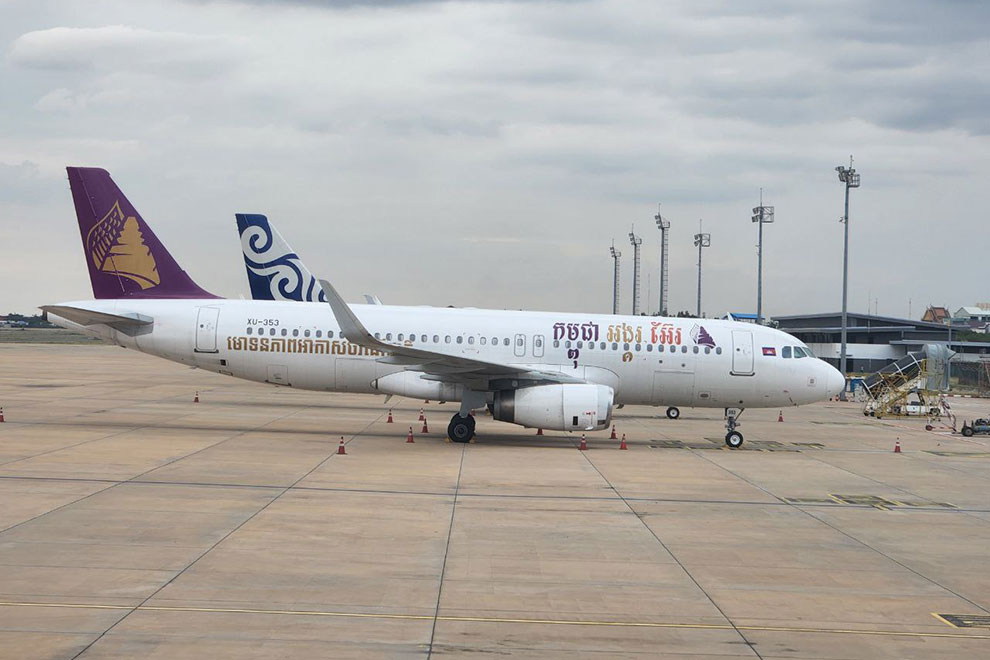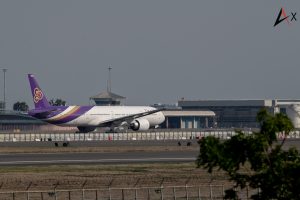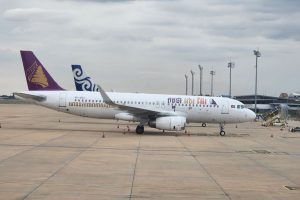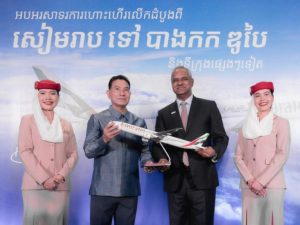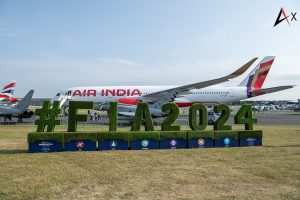Air Cambodia (K6, Siem Reap) is currently exploring the possibility of an initial public offering (IPO), with the idea having been presented to the company’s board of directors, according to Vice Chief Executive Wendy Y.W. Chen. She shared this information exclusively with ch-aviation during the IATA AGM in New Delhi.
Chen mentioned that the potential IPO could take place on either the Hong Kong Stock Exchange or the Cambodia Securities Exchange. “We are now a private company, and the first step is to become a publicly listed company and offer some shares to the public,” she explained.
Regarding the carrier’s growth strategy, Chen emphasized that aircraft acquisition remains the biggest obstacle to expansion. Currently, Air Cambodia’s fleet includes one new ATR72-600, one A321-200, two A320-200s, and two ATR72-500s. The airline is expecting to receive two additional ATR72-600 turboprops from ATR – Avions de Transport Régional, which are owned by Chinese lessor HNCA Aviation Financial Leasing Co., Ltd. (HNCAL), a subsidiary of Henan Civil Aviation Development Investment Co.
Chen stated that the airline requires around 30 aircraft to meet its future needs, with all options being considered. Despite a 20% year-on-year increase in operating income during the first quarter, she highlighted the scarcity of suitable aircraft as a key challenge. She noted that while the ATR is ideal for domestic routes and some regional destinations like Ho Chi Minh City or Bangkok, acquiring new aircraft for routes to China or Hong Kong is nearly impossible. Air Cambodia prefers new aircraft but is open to purchasing second-hand Airbus planes as well.
The airline has also been in contact with Boeing, which has shown strong interest due to the lack of Boeing aircraft in Cambodia. Chen revealed initial discussions about acquiring the B787-8 have taken place, as Boeing aims to expand into this market and maintains regular visits to the airline.
Since Air Cambodia’s fleet largely originates from Chinese lessors linked to its Chinese owner Xinggang Investment Group— a Zhengzhou municipal government-owned entity—additional aircraft acquisitions may also involve HNCAL. To support its long-term goal of operating a fleet of 30 aircraft, the airline views an IPO as a potential avenue to fund future purchases.
On the Chinese connection, Chen noted that Air Cambodia has also approached COMAC to discuss the C909 aircraft. While the Chinese manufacturer offers more flexible pricing, factors like costs and certification are carefully weighed before making a final decision.
With most recent investments flowing from China, expanding into the Chinese market appears like a natural strategic move, especially given the airline’s significant Chinese backing. “Cambodia’s rapid growth over the past decade has been driven mainly by Chinese investment,” Chen said, emphasizing that the Chinese market will be a priority for Air Cambodia. As a national carrier, she added, the airline will also support Cambodia’s broader development strategy.
Additionally, Air Cambodia aims to serve as a regional hub within the framework of the “6 countries, 1 destination” initiative announced by Thailand in 2024. The country has already shown interest in participating, which would create a Schengen-like zone among Brunei, Cambodia, Laos, Malaysia, Vietnam, and Thailand to promote tourism and economic cooperation.
Chen highlighted that to strengthen its role in ASEAN, the airline must expand its route network across the region and connect with major international hubs. Maintaining strategic partnerships, including with Vietnam Airlines—its minority shareholder—remains crucial for traffic growth.
Regarding ownership, Chen explained that a significant amendment was made two years ago to the joint venture agreement with Vietnam Airlines, allowing for additional investments and a gradual withdrawal of Vietnam Airlines’ stake in Air Cambodia. Currently, the ownership structure is reported as the Cambodian government holding 30%, Xinggang Investment Group 28%, 7TRIP International Co., Ltd from Hong Kong 28%, and Vietnam Airlines 14%. The agreement stipulates that the Chinese shareholder is set to acquire Vietnam Airlines’ 14% stake, potentially in 2026, although this date could be postponed. Previous reports indicated that the Cambodian government once held a 51% stake, with Xinggang owning 35% and Vietnam Airlines 14%, but independent verification of the current ownership structure remains unavailable.
